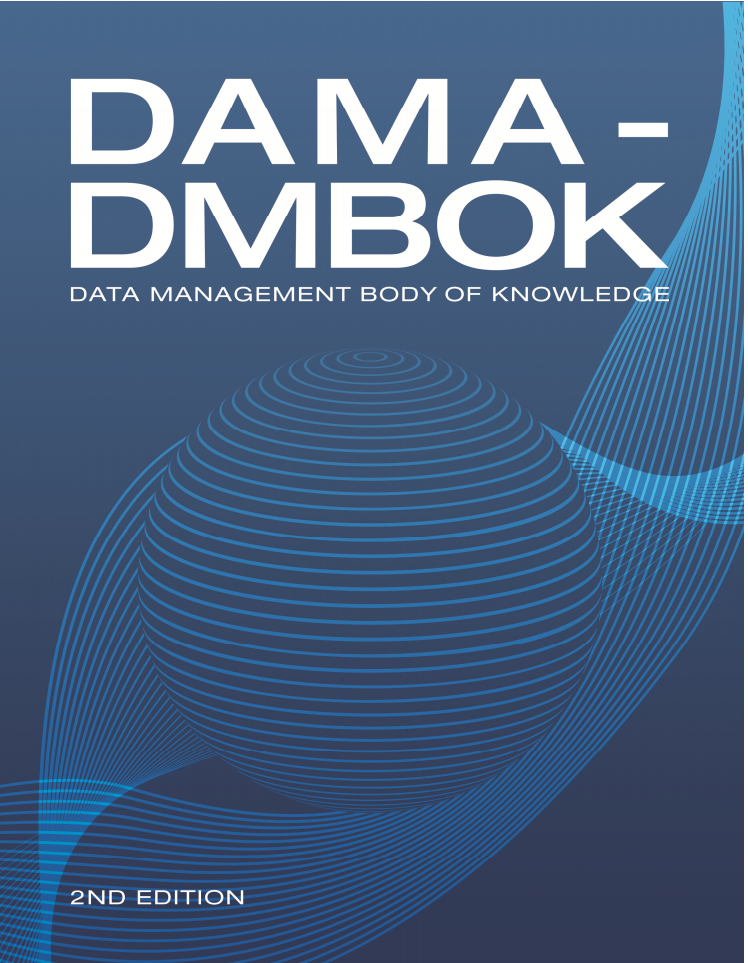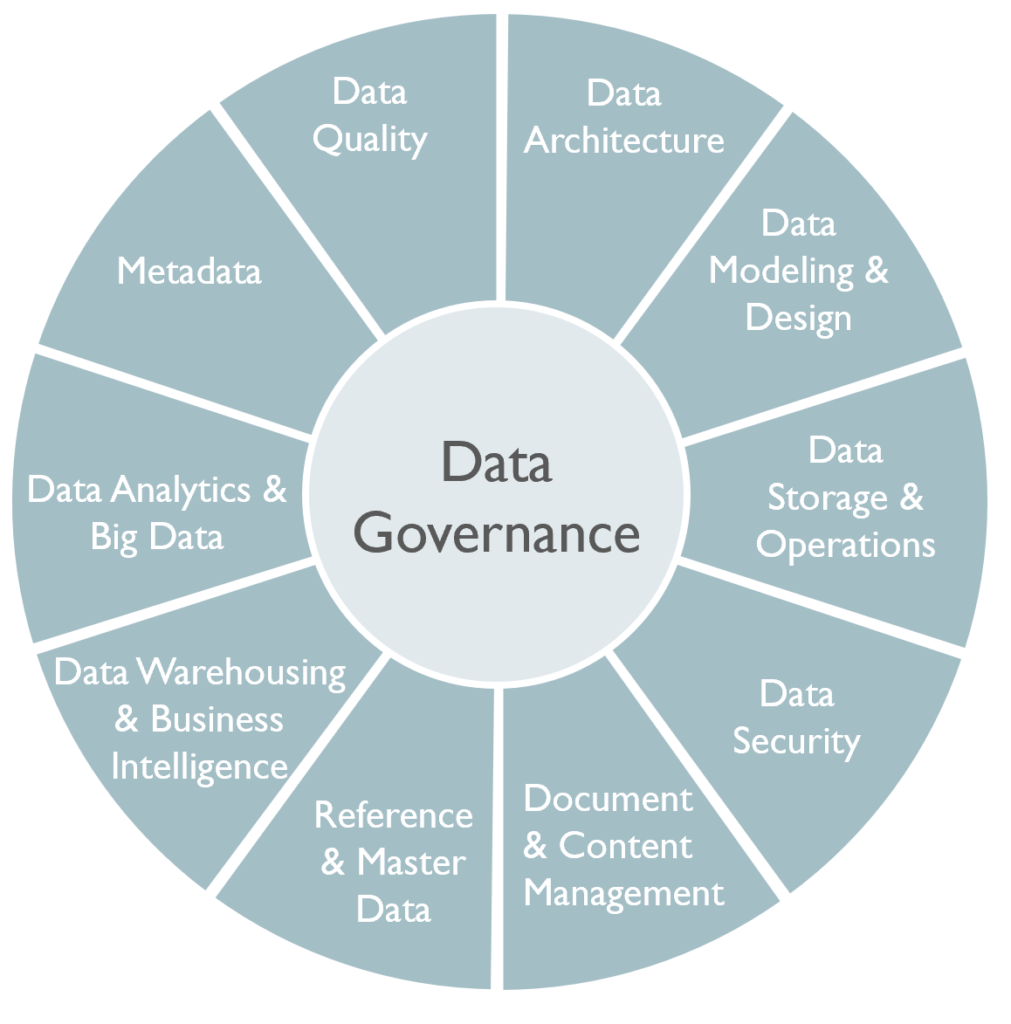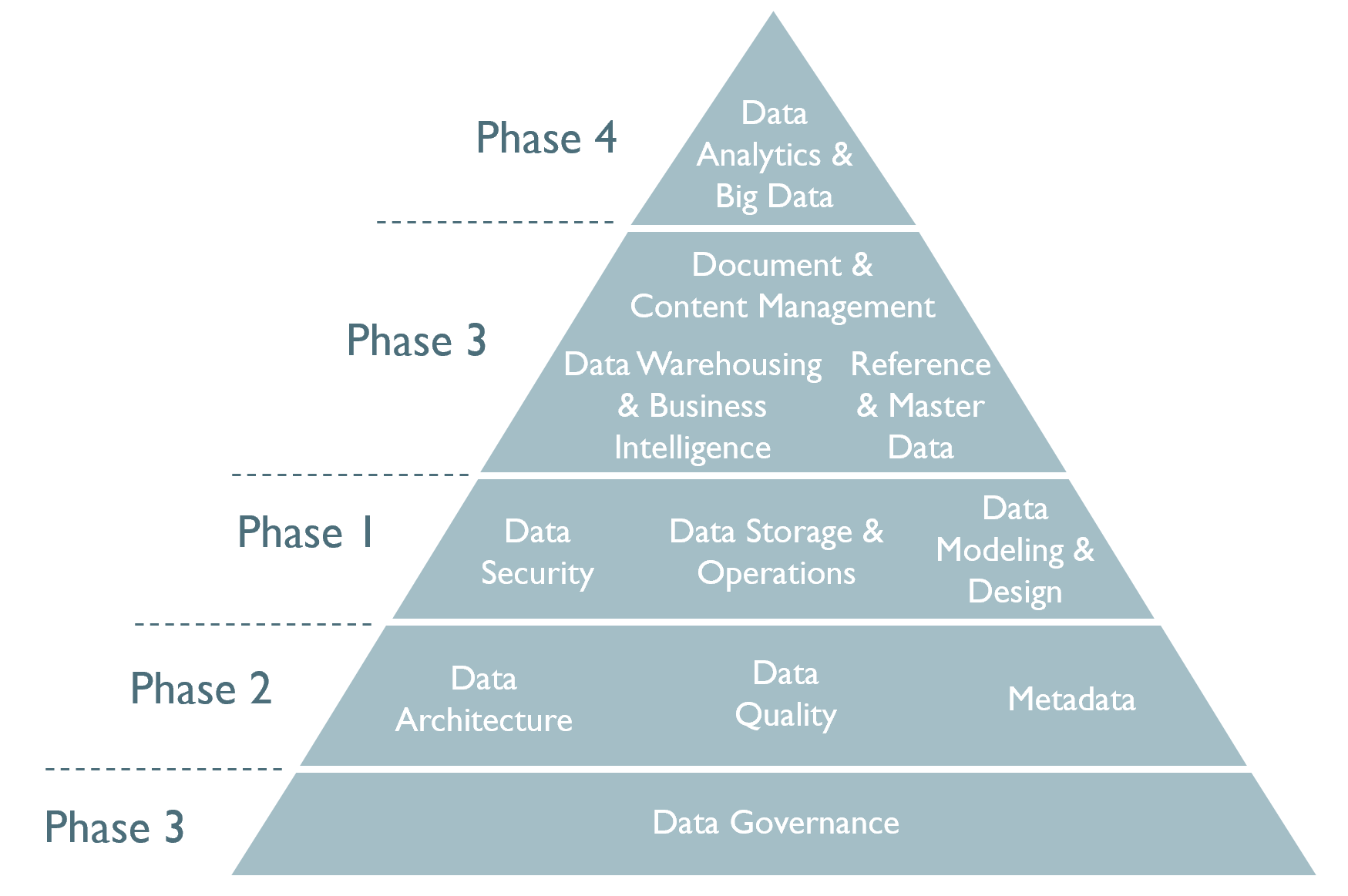What is Data Management?
Data management comprises all disciplines related to managing data as a valuable resource. In an process end-to-end view, all roles who enter, change, consume or delete data are stakeholders who must be involved at some point in time.
Managing data in an organization involves a broad range of tasks, policies, procedures, and practices. It is thus a discipline that goes far beyond simply implementing a tool to manage data. Think of it as a continuous improvement journey rather than a series of one-time efforts. Proper planning can help to greatly reduce beginner’s mistakes and maximize on necessary change management within the organisation.
Examples that benefit from Data Management
- Risk reporting was an issue in many financial institutions during the financial crisis that began in 2007. Banks were unable to manage their risks properly because of weak risk data aggregation capabilities and risk reporting practices. This prompted the creation of a guideline (BCBS 239) that made Data Management practise mandatory for systemically relevant banks in 2016.
- Regulatory reporting in an institution was found to be incorrect after many years of submitting data. The root causes were lack of governance, inadequate quality control and existing data quality issues.
- Automating ad-hoc reports puts data at the users’ fingertips. Lack of data quality will quickly undermine any trust in the data while the ease of use of the tools involved will determine user adoption rate.
- Redundant information in multiple appplications caused endless discussions and puzzlement about the true source of reliable data. Extensive rework and frequent reconciliations introduced unnecessary cost to the organisation.
- Data Protection laws (e.g. European GDPR) are on the rise globally and require companies to take special care of personal data. Where such laws are in place, the safeguarding of data is no longer just an internal matter, but needs to answer to the data subjects and to the regulator. Data breaches can be fined at up to 4% of a group’s annual global revenue.
- Mandatory fields in applications caused users to enter dummy information as the data entry process was not been designed with reality in mind. This is one of the root causes for data quality issues.
- A wrong data model has required an organisation to update data redundantly and to spend considerable time in reconciling conflicting information over many years. Understanding data models will help to avoid such issues in future developments.
- US Witholding Tax brackets were not assigned correctly to safekeeping accounts, leading to real $$ losses for a large custodian.
Why is it a challenge to maintain 100% data quality?
Consider the following data quality dimensions. Some can be checked automatically, while others require human operators.
- Accuracy: data correctly represents reality and matches with agreed source
- Completeness: all required records in the data set are present
- Consistency: the data format is consistent in the same field across all records.
- Integrity: no orphaned data due to full set of reference keys
- Resonability: when patterns meet expectation, based on common-sense judging
- Timeliness: most recent data is available
- Uniqueness: some entities may not exist more than once within the data set
- Validity: data conforms with defined set of valid values
Any of the following root causes can lead to data quality issues: lack of training, human errors, bad data entry interfaces, inconsistent business process execution, lack of ownership, incorrect assumption about data source, stale business rules and changed data structure. This enumeration is by no means complete!
What is the cost of poor data quality?
Besides internal rework to rectify data, there can be a direct bottom-line impact to the business:
- Inability to invoice correctly
- Increased customer service calls and decreased ability to resolve them
- Revenue loss due to missed business opportunities
- Delay of integration during mergers and acquisitions
- Increased exposure to fraud
- Loss due to bad business decisions driven by bad data
- Loss of business due to lack of good credit standing
When is a good time to embark on a Data Governance journey?
Every business has data assets, e.g. customers, inventory, transactions, etc. The better the data is managed, the more efficient it is to collect, keep and use data. Data management helps people, organizations, and connected things optimize data usage to make better-informed decisions that yield maximum benefit.
It is recommended to start data management with an awareness session and a data management self-assessment before deciding on a way forward. A too formal implementation of data management can gradually become a non-value adding monster, making it difficult to make meaningful progress and to get buy-in within the organisation.
A customer-centric approach is thus recommended, where most pressing user needs are implemented, and existing issues are solved tactically, while the strategic solution can be implemented later as part of a data management framework. An example is predictive data analytics using artificial intelligence to mine big data. Such advanced data science topics applying machine learning and natural language processing are usually on top of people’s minds when they think about Data Management. Even if you will take a different path, consider the phased approach as recommended by Data Management experts.
Phase 0: Awareness session and a data management self-assessment
Further reading
 DAMA Guide to the Data Management Body of Knowledge (DAMA-DMBOK)
DAMA Guide to the Data Management Body of Knowledge (DAMA-DMBOK)
Edition 2, 2017
Authors: DAMA International



